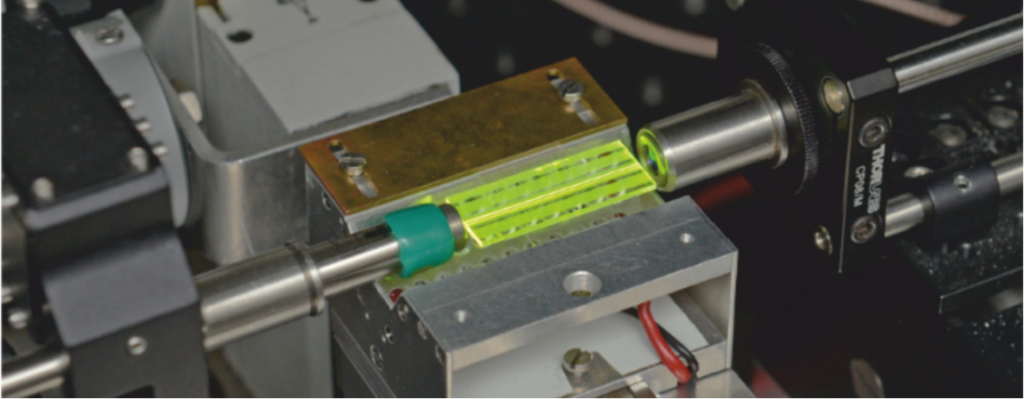
Detlef Kip is professor for Experimental Physics and Material Sciences.
In coordination with several industrial partners, he is researching non-linear optical materials in the LINOBUS project. Non-linear optics or optically non-linear materials are used, among other things, in the construction of optical switches and modulators. For example, green laser pointers often contain diodes that generate infrared light, which is frequency-doubled by a nonlinear crystal and thus turns green. They can also be used as components in optical data and image processing.
Non-linear optical materials make it possible, especially at high light intensities, to specifically change the wavelength (light colour) of irradiated light. Examples of such processes are frequency doubling (halving the wavelength, for example from red to blue) or, conversely, optical parametric generation. Here, for example, a blue light particle “decays” into two red light particles, which are then in an “entangled” state as a photon pair. In entanglement, two particles that were formerly generated as a pair are connected in their properties even after their spatial separation. Together with the use of semiconductor lasers as pump light sources and optical waveguides, these materials make it possible in principle to create new compact and inexpensive light sources for a wide range of applications in photonics and quantum technologies.
In order to bring new efficient light sources for the near ultraviolet spectral range in particular further into application, the LINOBUS project funded by the German Federal Ministry of Education and Research (BMBF) is to research and specifically improve the material properties and technological principles of periodically poled lithium tantalate waveguides. LINOBUS stands for “Lithium tantalate waveguides for non-linear optics in the blue and ultraviolet spectral range at high powers”. The concrete aim is to produce so-called rib waveguides by a novel process (diamond sawing) and to make them less sensitive to high light powers by introducing certain types of atoms. Further work concerns the development of processes that are also suitable for mass production for the generation of periodically poled crystals, which are necessary for particularly efficient light conversion. Especially the generation of very small periods in the crystal, as they are required in the ultraviolet spectral range, pose a challenge.
“If the work delivers the hoped-for results, materials and processes will be available for the realisation of new types of compact beam sources that will enable a wide range of applications, for example for highly efficient photon sources, for quantum metrology or fluorescence spectroscopy in medical applications, for example,” explains project coordinator Univ.-Prof. Dr. Detlef Kip (Professur für Professur für Experimentalphysik und Materialwissenschaften).
Additonal information
https://www.hsu-hh.de/laser/forschung
https://www.quantentechnologien.de/forschung/foerderung/wissenschaftliche-vorprojekte-wivopro-photonik-und-quantentechnologien/linobus.html
Scientific contact
Univ.-Prof. Dr. habil. Detlef Kip, Tel. 040 6541-2457, E-Mail [email protected]
Original taken from this page